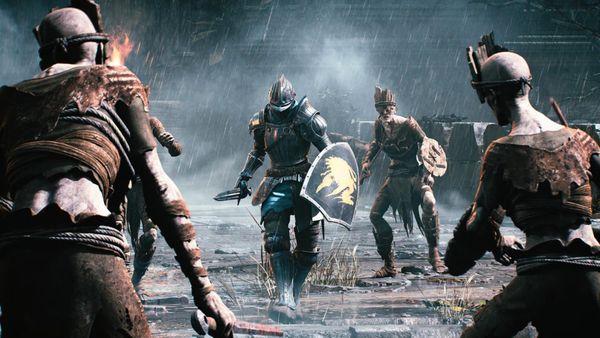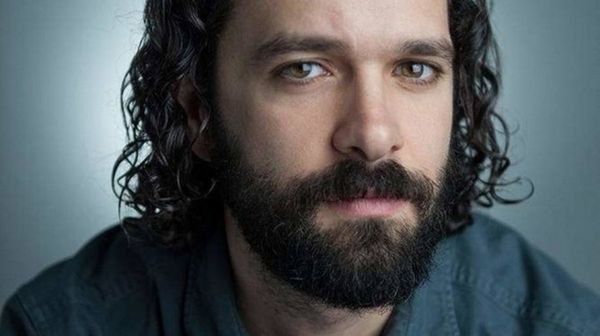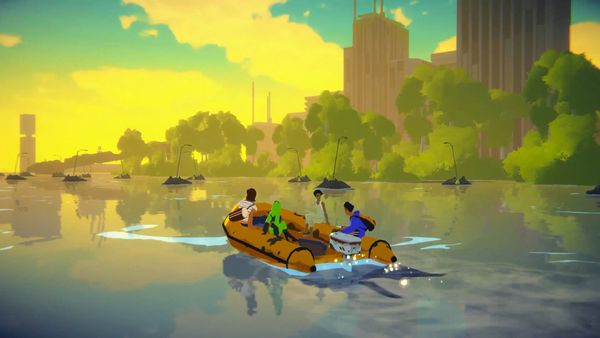The Last of Us: To Kill A City
Inland Empire is David McNeill’s column about world building, CRPG’s, love, loss and many other kinds of literary vulnerability.
We invest a lot of time and money and attention in constructing ideal urban spaces: finding the perfect coffee table to suite the post-modern lounge; scrolling through dozens of websites to find those one curtain rods; five weekends in a row sitting on chairs until we find that one. Humans are unique in our obsession with aesthetics: the exercise is so much about crafting a space that feels the way you desire, insulated from the rest of the world. This is your apartment, your house, your yard.
Revisiting The Last of Us Part 1, seeing these designed spaces in complete disrepair ran right through me and dug at some deep, underlying dread. This is the first time I’ve been a home-owner, and consuming this story of post-apocalyptic urbanism, suddenly all of the design and care and deliberateness feels paper thin. Seeing so many homes and livings become nothing but detritus is confronting.
In the openings sections of the quarantine zone, there’s a moment where you come upon the Boston skyline for the first time. Beyond the squalid streets and grimy walls, two skyscrapers lean drunkenly against each other. A thousand panes of glass are no more than shards. Entire floors where dozens of office workers sat and made phone calls and worked on spreadsheets are vanished, obliterated into nothing but recollection by a desperate attempt to save the quarantine zone. How many people never made it out of those buildings. How many are entombed there now, sealed in a mausoleum of capitalism that could not save them in the end.
The sight of the skyline is arresting. The destruction is impossibly complete in its breadth and severity. I couldn't help but imagine this happening to my city. The desks and chairs and computers and meeting rooms I use every day being abandoned. Broken and copper with rust. Those unlucky enough to be trapped within calcified by toxic spores, mummified and returned to the Earth. A grim future separated from ours by a membrane so thin you think it’s barely even there unless you reach out and touch it.
As I recovered and followed Tess and Ellie through a maze of apartment buildings and basements and crawl spaces and living rooms, it became apparent that the worst part of the end of the world is not obliteration, but what remains. We climb into a family living room. An armoire has toppled on its side, spilling a dozen trinkets and a collection of glasses onto the carpet. A TV cabinet is buttressed by two enormous speaker towers, stained with years of disuse. But the flat screen remains untouched, somehow in absurdly good condition. I could see the family gathering on the sofa to distract themselves with comforting shows and films. The music they’d play from the speakers during dinner. Now, nothing but objects in space to mark their existence. Somehow worse than if there was nothing.
The exercise of navigating these spaces is partly in avoiding the infected zombies, yes, but your greatest obstacle is the disrepair of the city. Years of neglect and glassing reveal the brittle skeleton within the urban. Subway tunnels become arteries flowing with rain water. Great buildings crumble, their innards turn to ash at Joel’s touch, breaking as you clamber from rib bone to rib bone. Thick, green moss crawls through basements, reclaiming cement, binding the cracked foundations. So much of the world is drowned in rain water that has nowhere to go. Entire city blocks are swallowed by overflowing storm drains. The spaces within suspended in time forever. Clambering through the great cadaver of urban reality draws out the absurdity of its existence.
We have constructed a living organism of rebar and highways and traffic lights that can be felled in an instant. And yet we pretend otherwise, that the irrational creature we’ve conjured through years of development and zoning grants and labour disputes and wage theft is, necessarily, unending. We tell ourselves a lie over and over again, even as we purchase that next appliance and ponder paint swatches: the lie of the urban, and behind it, the ultimate dread: the end of the urban. The end of office drinks and work politics and raises and going away dinners. No more coffee machines. No more hangovers on a Monday morning and no more pointless meetings. No more.
It’s fitting that we follow Joel moving through this blasted city. Before the end of the world, Joel is an island. He lives in a huge, comfortable slice of suburbia in Texas. His yard is large, well kept. He has the televisions and the fancy grill and the beer fridge and the kitted out study: an entire world, curated and designed. This man never believed in the mythic city, never believed in the greater organism: this man has a gun in his desk drawer, ready to shoot his neighbour at the drop of a hat because, in some absurd way, he was always ready for this moment. Always ready for the illusion to shatter because he always stood beyond. He doesn’t need the world outside. He cares about his own, about ‘us’.

After the death of his daughter, we find Joel in the Boston Quarantine Zone twenty years later, thrust into the heart of the deceased city, forced to crawl through its capillaries, forced to confront the impossible, existential reality of what remains.
Fighting through the detritus of municipal life, shadowed by those two broken towers, Joel must confront a simple truth: he is the sort of person who can survive the collapse of reality. He will shoot men in the head, stab them to death, beat their skulls in with a baseball bat. And he’s good at it. The end of the world suffers only the strong to remain. In the end, the cadaverous city asks Joel to choose: the world, or ‘us’ - and in a thunder of gunfire and blood, Joel answers the same way he always has: I choose us.
And as we learn later, he goes back to his previous life, and is permitted to, as it never relied on the myth of urban reality. He settles in a huge house with a big yard. His neighbours on either side say hi to him, but he’s not close with them. He’s the gruff general on the outskirts of town everyone is a little frightened of. He even gets to have a daughter again.
While he performs various moments of vulnerability during his journey through the black heart of Boston, Joel is a selfish, conservative, hard-case who survives precisely because he is not the best of us. The believers of reality are entombed in their shattered office buildings and mid-century living rooms and studio apartments: dead cells rotting in the lifeless goliath of Boston. And as the moss and vines creep among the bones, taking the city back on inch at a time, all that remains is the last of us, and what the rest of us left behind.



